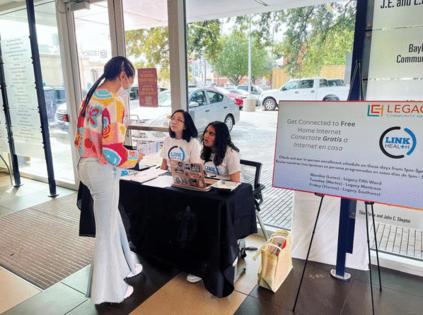End of internet subsidies for low-income households threatens telehealth access
Published in Health & Fitness
For Cindy Westman, $30 buys a week’s worth of gas to drive to medical appointments and run errands.
It’s also how much she spent on her monthly internet bill before the federal Affordable Connectivity Program stepped in and covered her payments.
“When you have low income and you are living on disability and your daughter’s disabled, every dollar counts,” said Westman, who lives in rural Illinois.
More than 23 million low-income households — urban, suburban, rural, and tribal — are enrolled in the federal discount program Congress created in 2021 to bridge the nation’s digital connectivity gap. The program has provided $30 monthly subsidies for internet bills or $75 discounts in tribal and high-cost areas.
But the program is expected to run out of money in April or May, according to the Federal Communications Commission. In January, FCC Chairwoman Jessica Rosenworcel asked Congress to allocate $6 billion to keep the program running until the end of 2024. She said the subsidy gives Americans the “internet service they need to fully participate in modern life.”
The importance of high-speed internet was seared into the American psyche by scenes of children sitting in parking lots and outside fast-food restaurants to attend school online during the covid-19 pandemic. During that same period, health care providers and patients like Westman say, being connected also became a vital part of today’s health care delivery system.
Westman said her internet connection has become so important to her access to health care she would sell “anything that I own” to stay connected.
Westman, 43, lives in the small town of Eureka, Illinois, and has been diagnosed with genetic and immune system disorders. Her 12-year-old daughter has cerebral palsy and autism.
She steered the $30 saved on her internet toward taking care of her daughter, paying for things such as driving 30 minutes west to Peoria, Illinois, for two physical therapy appointments each week. And with an internet connection, Westman can access online medical records, and whenever possible she uses telehealth appointments to avoid the hour-plus drive to specialty care.
“It’s essential for me to keep the internet going no matter what,” Westman said.
...continued
©2024 KFF Health News. Distributed by Tribune Content Agency, LLC.










Comments